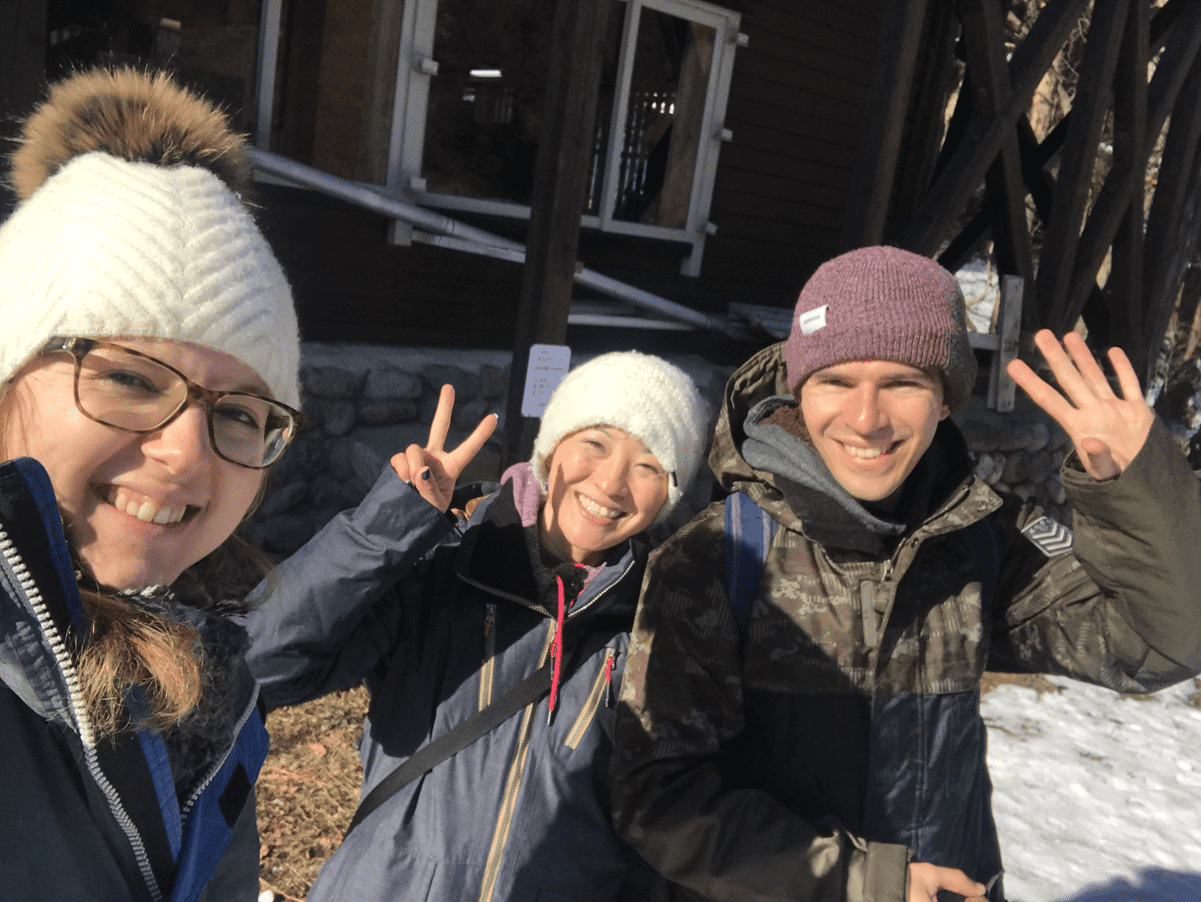Hello everyone, today I want to tell you a little about our day trip to the Hakusan mountainside we experienced last weekend. As I told you before, we were planning to go on a snowshoe hike this winter but, as the snow never came, we had to postpone it and we finally decided to go there just for a winter hike without snow or snowshoes. So sad… But we still wanted to see the mountains in the winter, so we grabbed our hiking boots and got ready!
We were invited to join this tour by our friend Sumie, who we met at the Kaga Yuzen event that we visited in October last year. She is also working for the Tabitaiken company, which offers eco tourism styled tours in Kanazawa and surrounding area and therefore also this trekking tour. It’s not just a hike but an educational tour where you are learning a lot about the animals in the mountainside as well as the special plants and trees. Together with her, we drove about 1.5 hours from Kanazawa to our destination, a wildlife observatory close to Hakusan Ichirino Onsen Ski Resort. Usually, at this time of the year, the town is very busy and there is much snow. When we passed the ski area, there was at least some snow and the ski slopes were open, but it didn’t look very appealing as it was only very little snow. But, there were some people skiing! As it was a very sunny day, it was a good choice to go outdoors. However, the snow didn’t look very fluffy and I guess it wasn’t easy to ski.
We followed the White Road, the route connecting the famous Shirakawa-Go with Hakusan City, for some minutes until we reached our destination. Funny side fact: the road was closed at our destination, therefore the road was turned into a makeshift parking lot from all people who were visiting the wildlife center! And, we also had our lunch while sitting on the road! But I’ll tell you later about that.
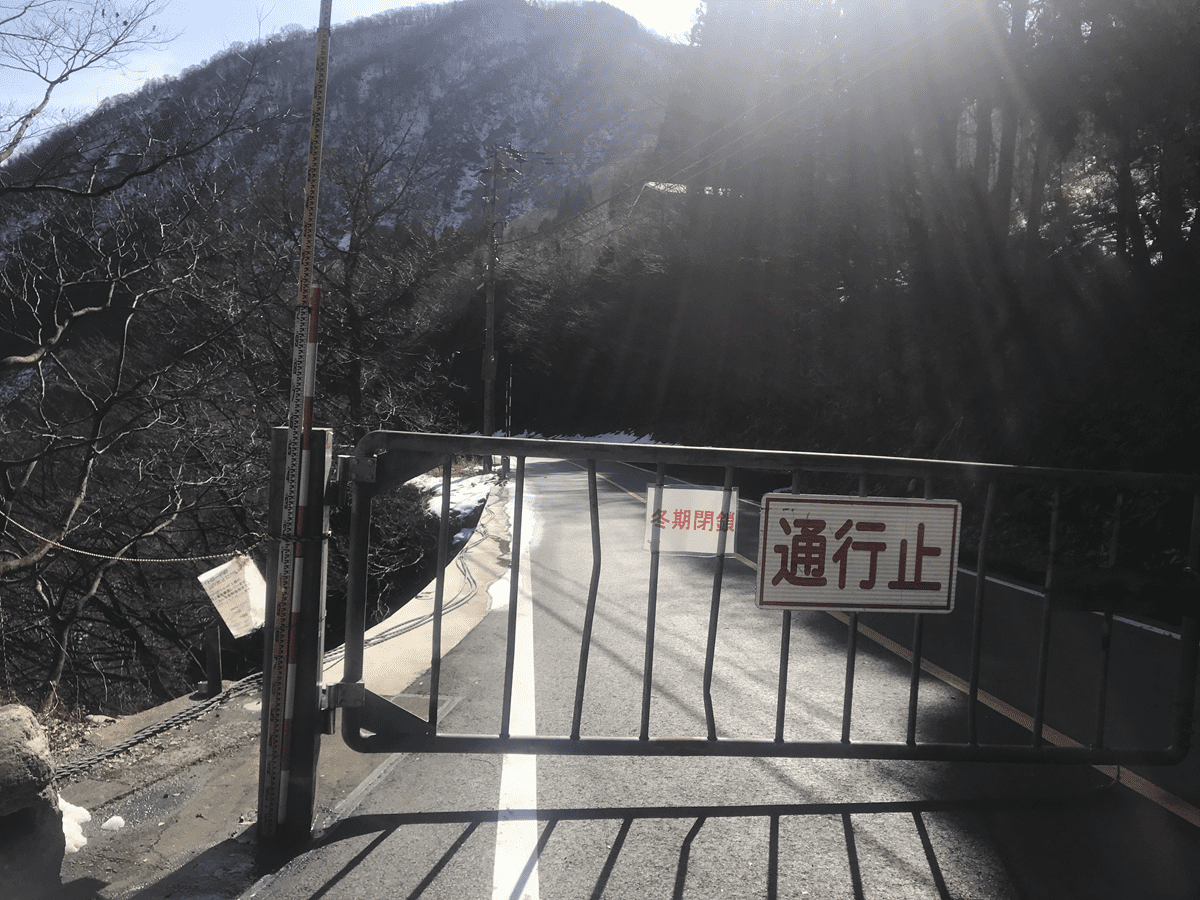 White Road is closed now
White Road is closed now
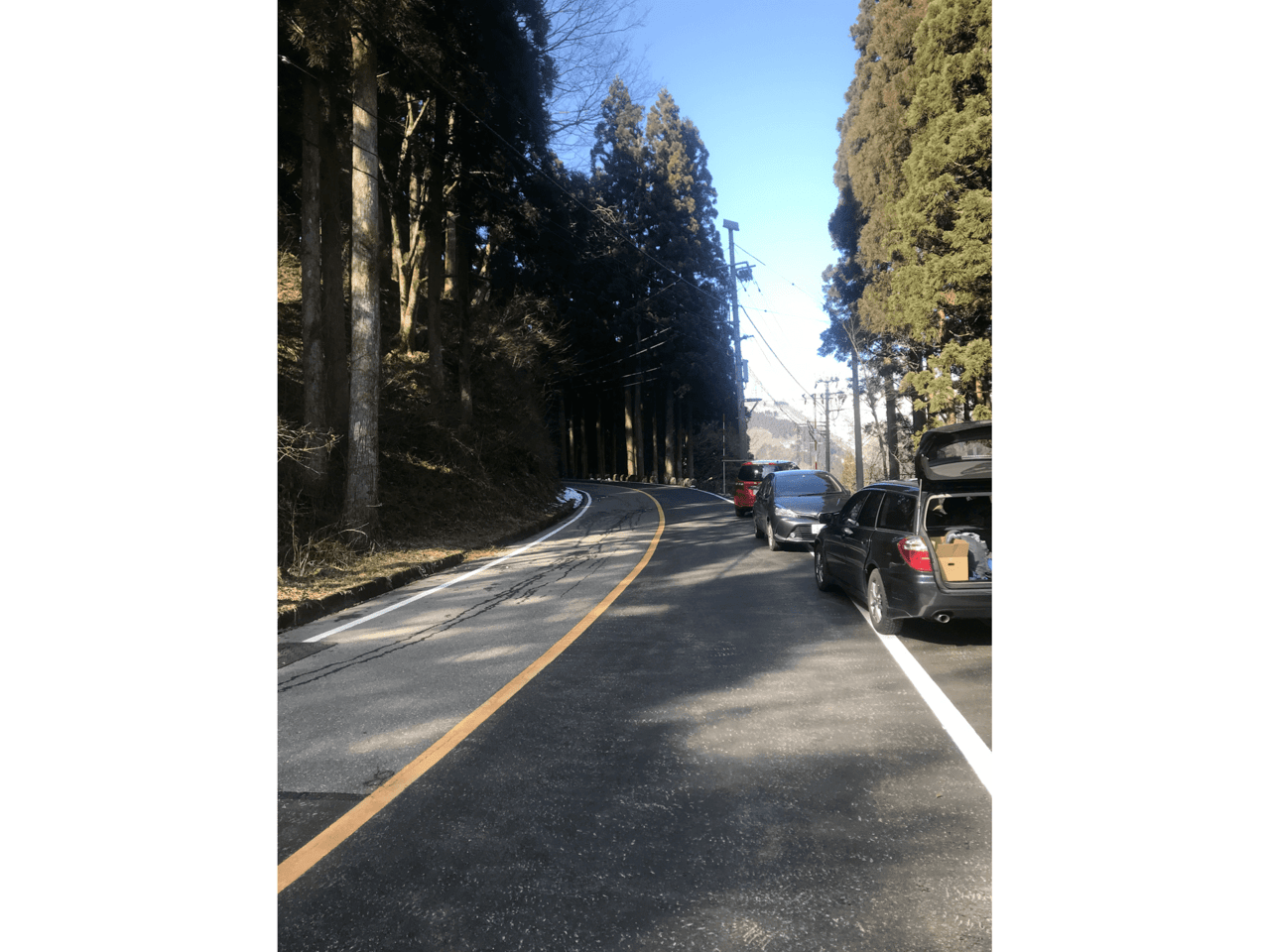 Makeshift car park
Makeshift car park
The Bunao Observation Center is the only place where you can watch the wildlife with very professional equipment.
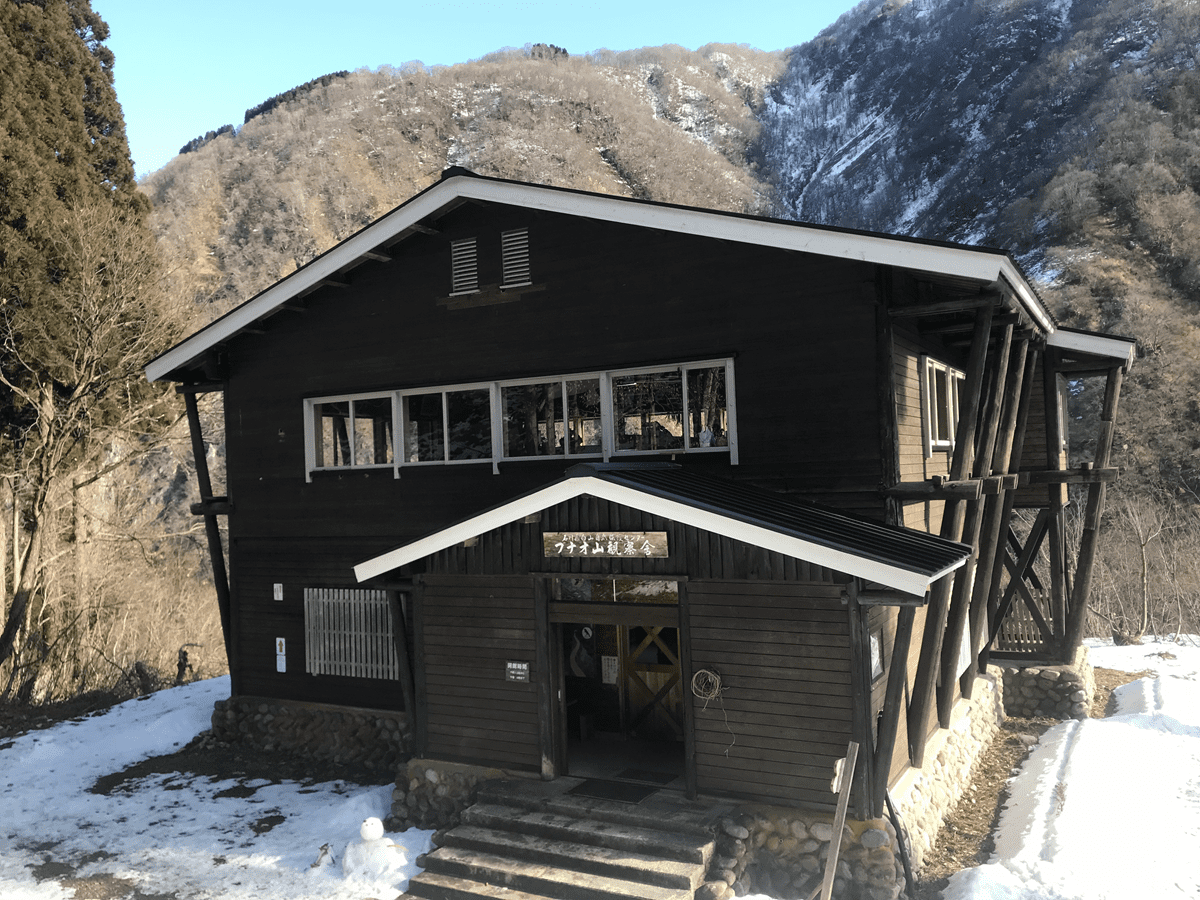 The Buano Observation Center
The Buano Observation Center
On the second floor of the building above, you can sit in front of big panorama windows and watch the surroundings with high tech telescopes and binoculars! The panorama of the mountains itself is spectacular, but being able to watch everything that is so far away without a hassle is brilliant! Many people from Ishikawa come there to enjoy some hours of wildlife watching. Observation staff is there all the time, counting the animals that have been seen every day. When we visited, wild boars had been spotted nearly every day of the week, as well as monkeys! Lucky for us, the bears seemed to sleep and didn’t show up, even though the winter is so warm and there is no snow. They even have some night cameras, we could watch some funny pictures of nocturnal animals that have been captured on camera.
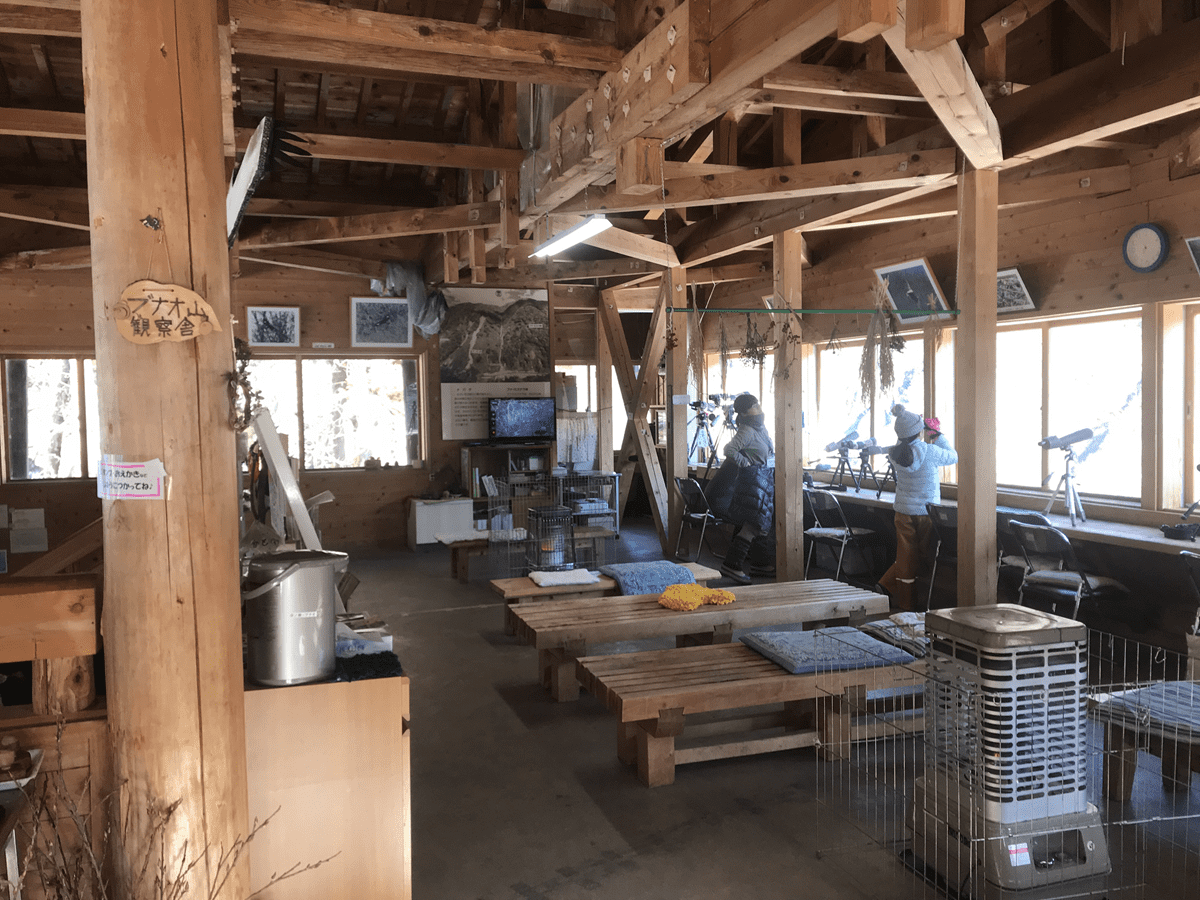
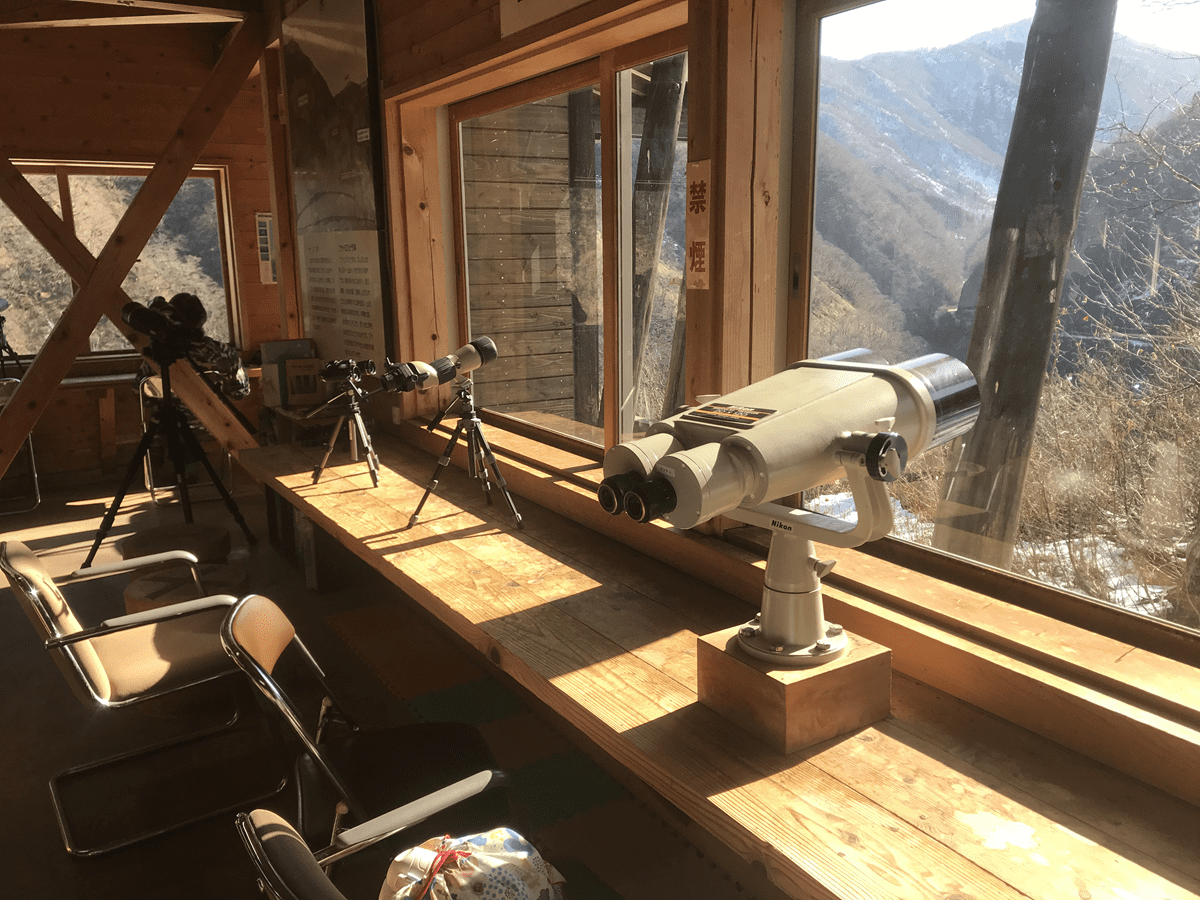 High end binoculars!
High end binoculars!
During our stay at the center, that is only open during the winter time, we could watch some wild monkeys at the other side of the valley through the telescope! We were really lucky.
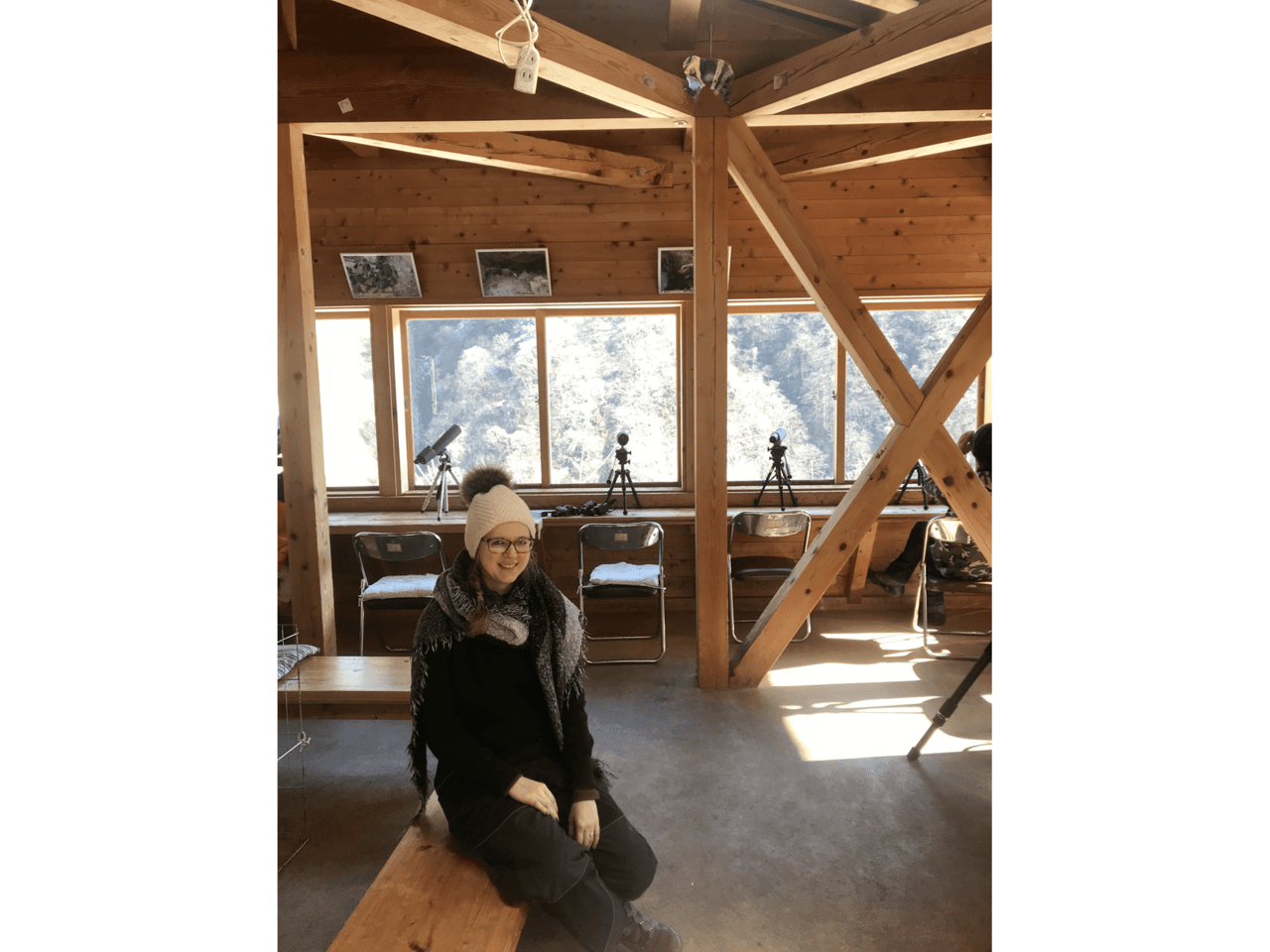 We were also lucky because it was very cozy sitting inside and getting warm again
We were also lucky because it was very cozy sitting inside and getting warm again
However, we didn’t stay at the center for the whole day. Our small group gathered together and Sho san, the nature guide, got us ready to go. As there were a lot of children in our group, the hike was not really challenging (and more like a walk than a hike), but that was fine for us. We still were sad that the snowshoe hike was not possible though…
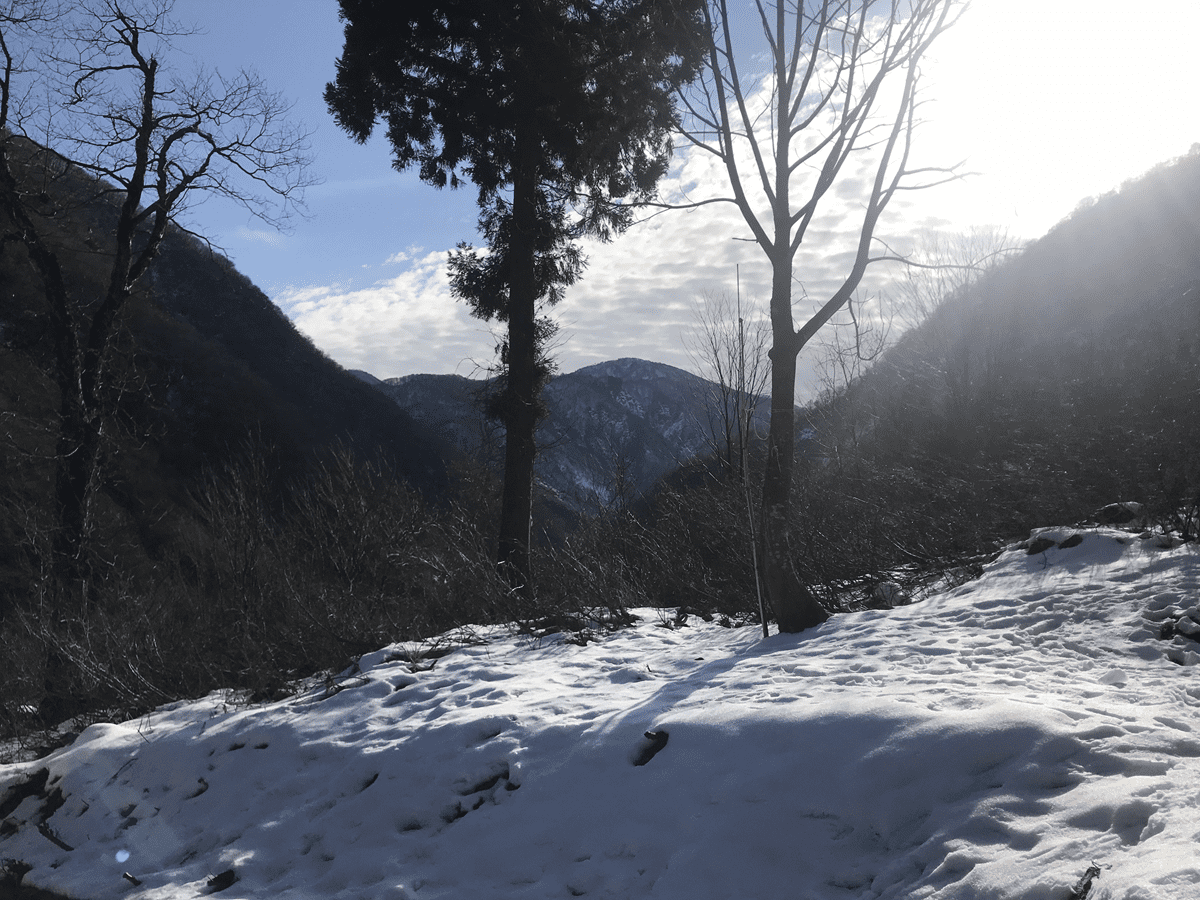 A little snow, lots of sun but otherwise, only brownish nature
A little snow, lots of sun but otherwise, only brownish nature
Our guide Sho san walked with us around the grounds of the Wildlife Center and showed us a lot of interesting animal traces. We saw footprints of various animals very close to the toilet hut of the center! He could also show us some branches where he identified the animal that had been gnawing at it! So crazy, I would have never noticed at all that there were even gnawing traces on the branch. He also explained why the animals liked the specific branches and how they gather hidden food at from the winter plants. Especially monkeys love to chew on branches. What surprised me also were the traces that hungry bears had left behind. They had been gnawing on the tree trunks a lot so that the bark was falling off! Also, I want to highlight that the trees directly next to the toilet hut were affected. So take care if you are going out there in fall or spring! :o
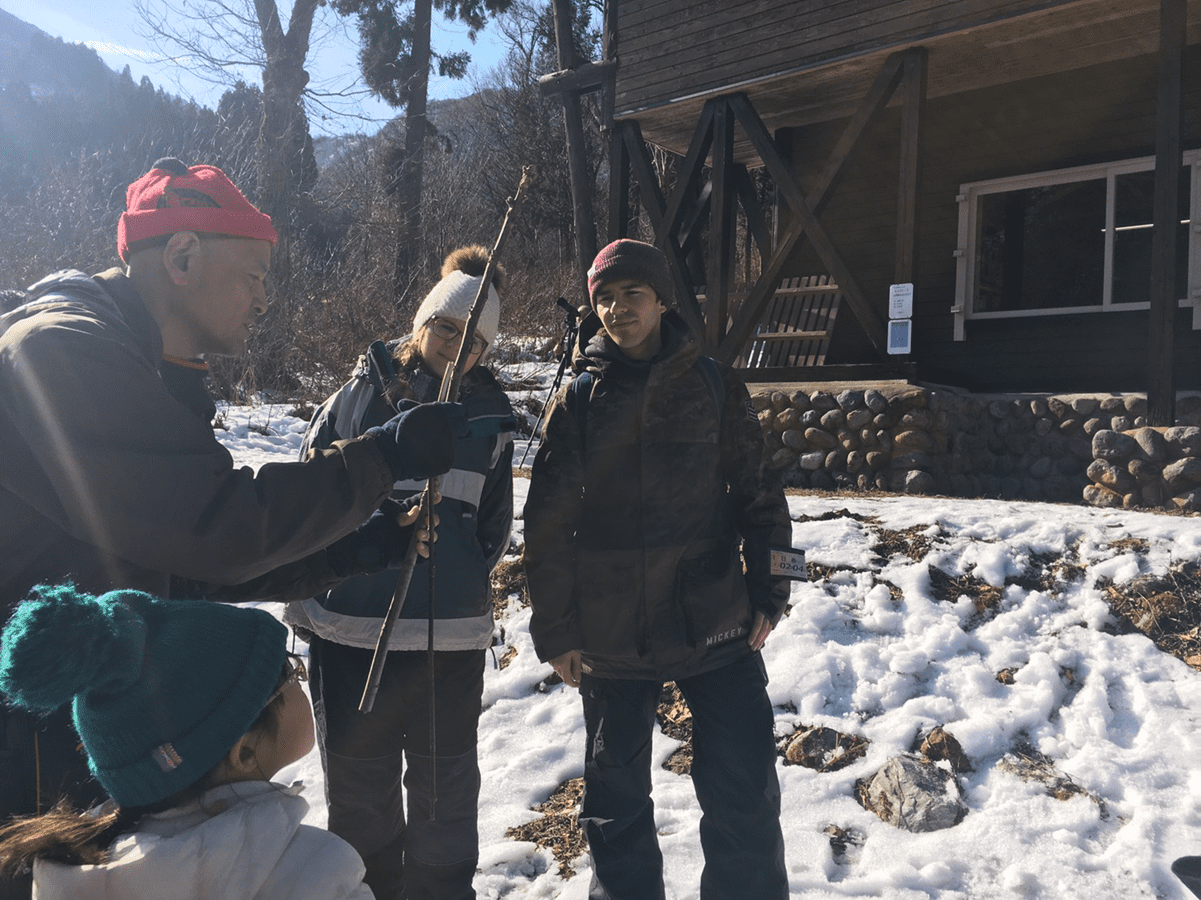 Learning about monkeys eating behavior
Learning about monkeys eating behavior
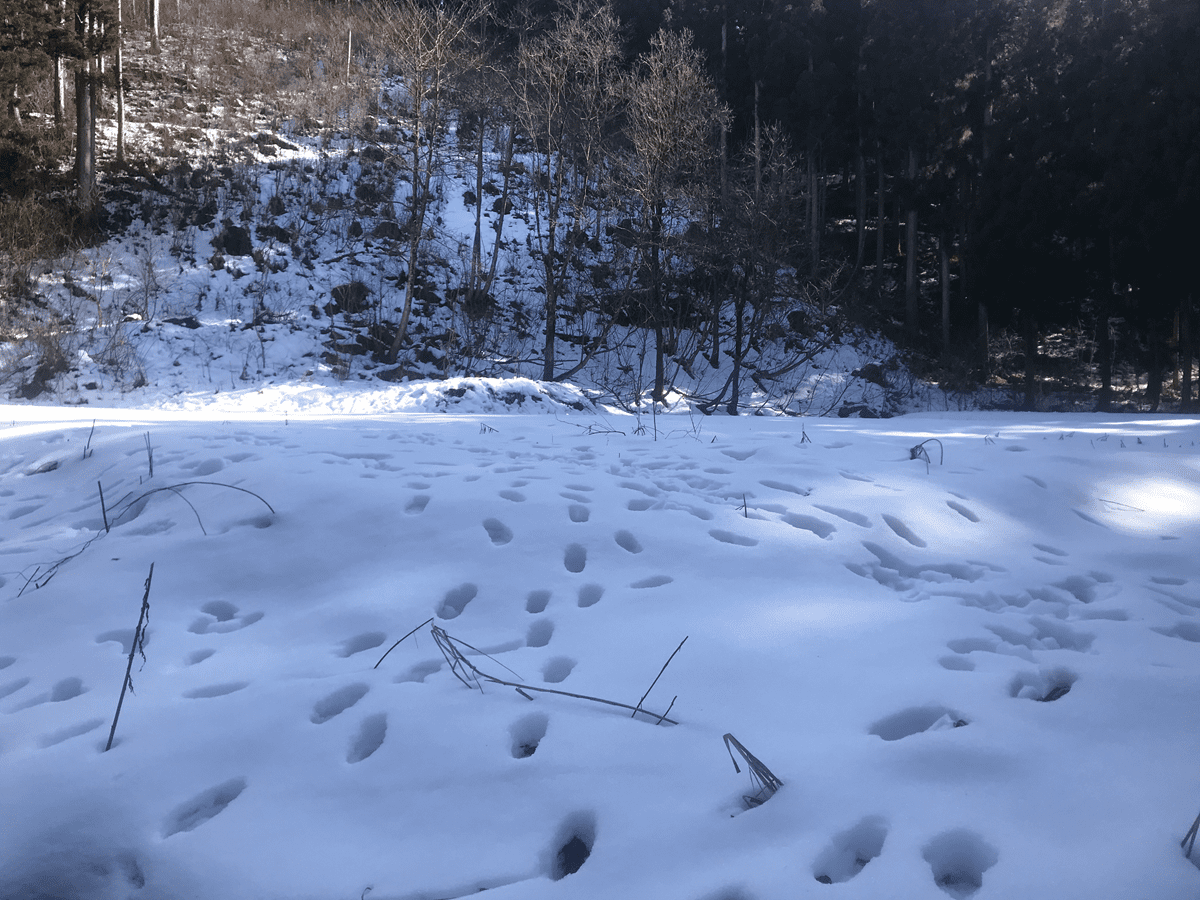 Footprints - and no, not from humans! :o
Footprints - and no, not from humans! :o
As there is not enough snow this year, the plants are already preparing their processes for spring. Sho san could show us many plants and trees that were starting to get ready for blooming season. He also told us that there was usually about 2 meters of snow at this time of the year, so no wonder that the plants don’t know what’s going on and start their spring preparations.
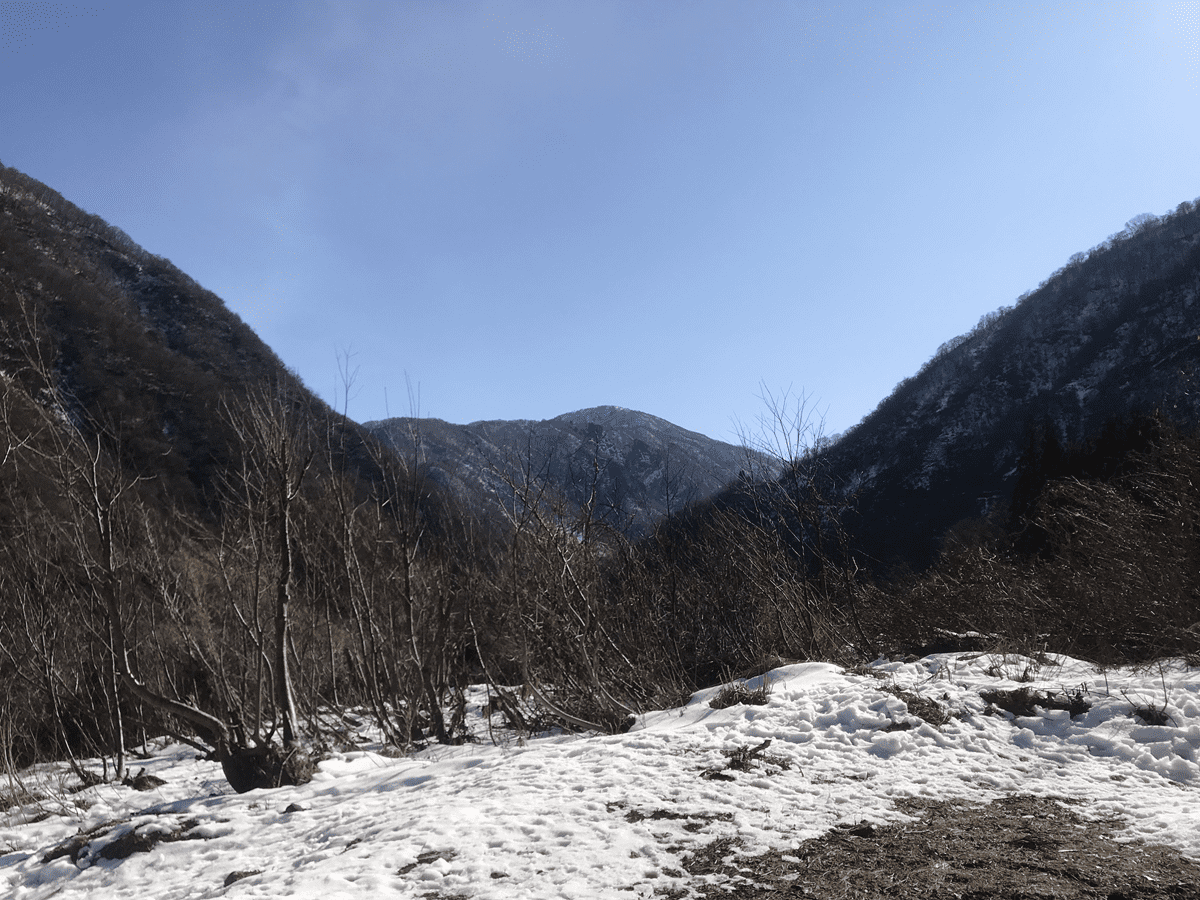
For lunch time, he had some special dish prepared for us: Nabe, a Japanese hot pot dish that includes various ingredients, ranging from vegetables to seafood. We enjoyed a vegetarian styled Nabe with fishcake as topping. The location of our lunch was quite unique. We went back to the makeshift car park on the closed road, our guide transformed it to a camping/food site within minutes (with very professional camping cooking equipment. He even had two tiny chairs for Niklas and myself) and cooked the hot pot while the children built a whole chill out tent site (also within minutes) and got cozy there. We were amazed! That’s how we ended up on the road with our delicious, self cooked Nabe and even enjoyed the whole lunch in the winter sunlight. Perfect!
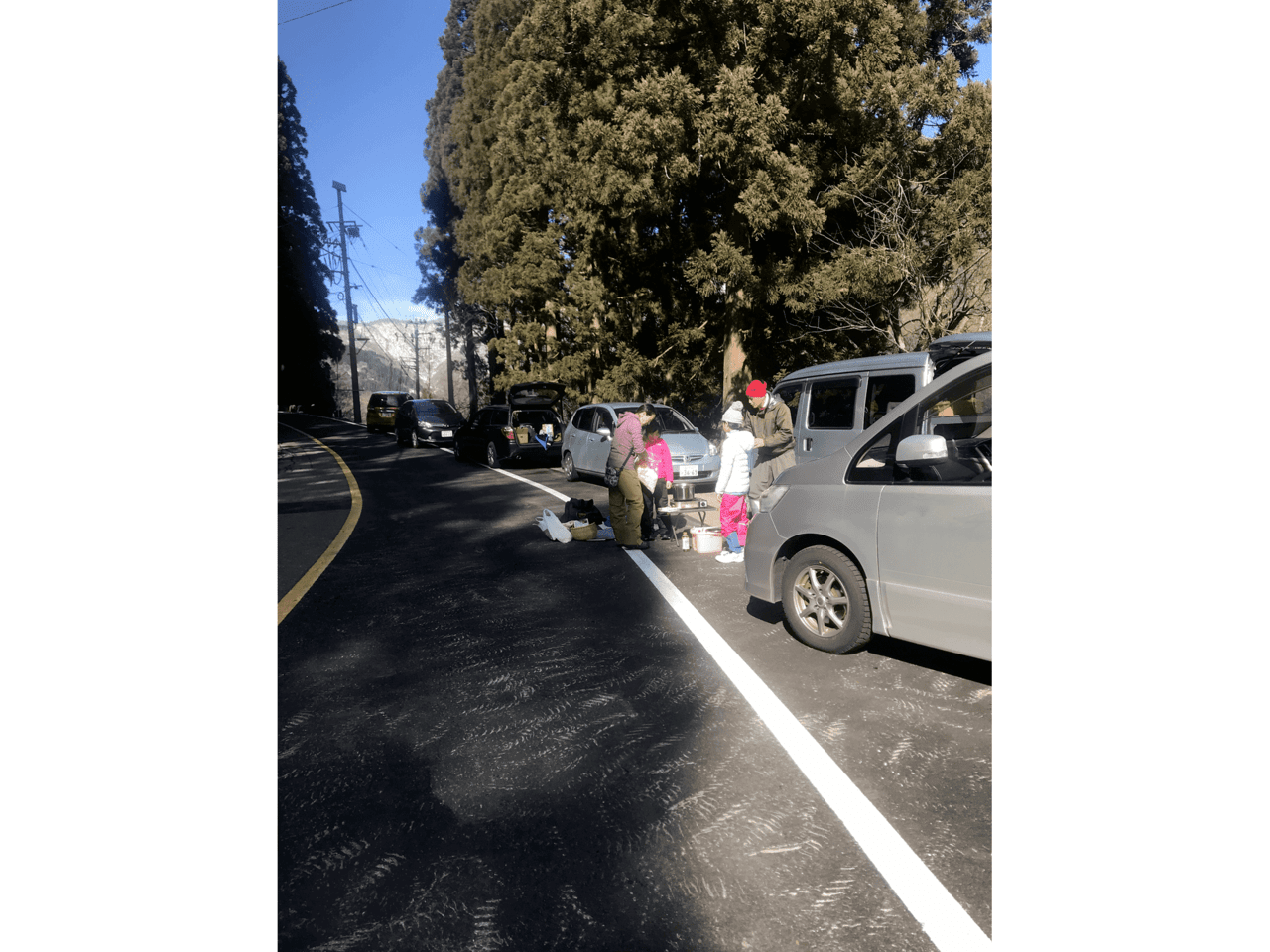 Preparing lunch
Preparing lunch
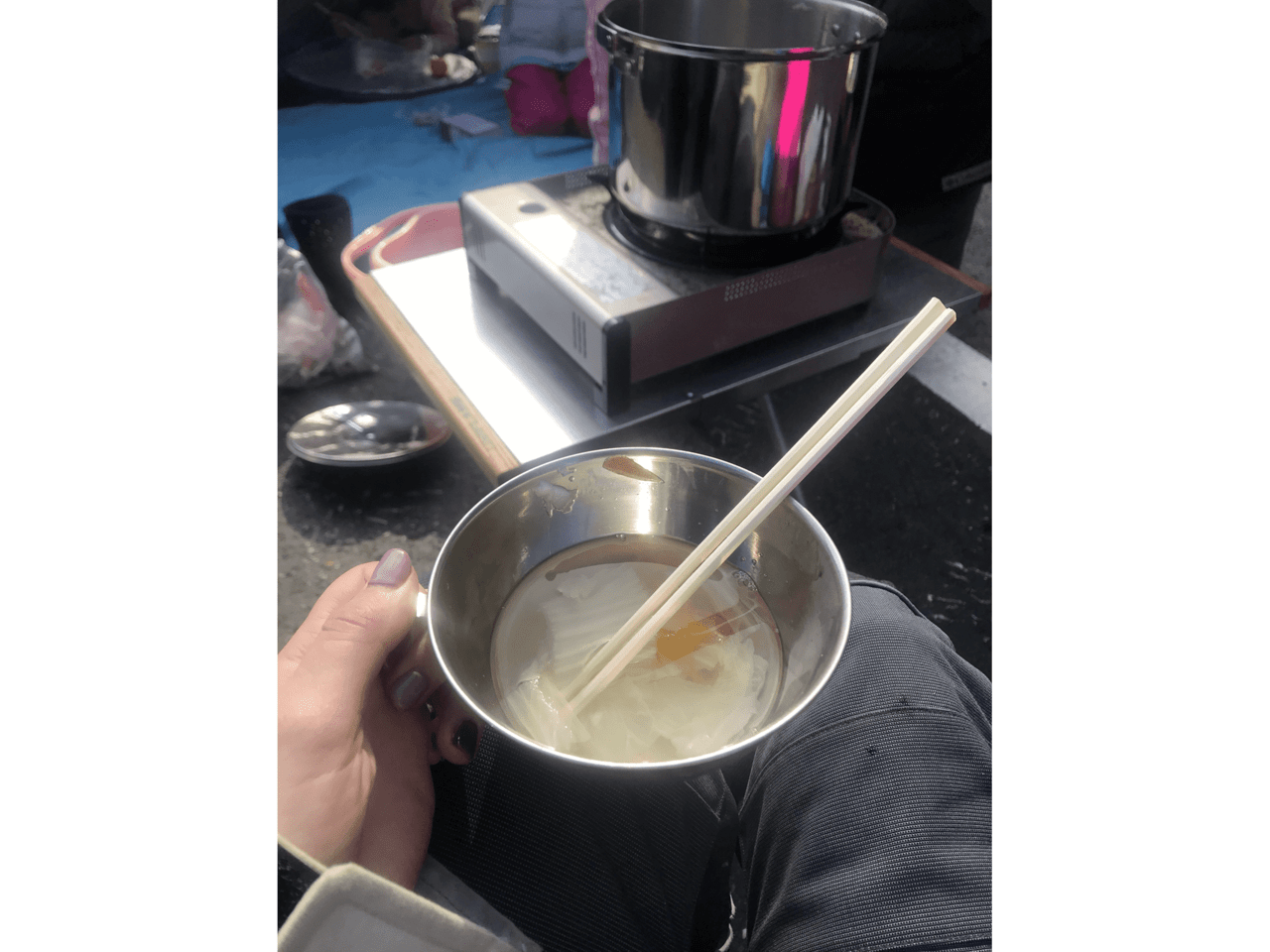 Outdoor lunch with the sun
Outdoor lunch with the sun
As fast as our makeshift camp was build, as fast it was also deconstructed again, leaving no trace of any of our activities.
Afterwards, we went for another small walk, this time way more uphill than before, and even found a little more snow on our way. And I can tell you, not only the children enjoyed playing in the snow, Niklas and I also had lots of fun walking through the icy snow and throwing snowballs at each other.
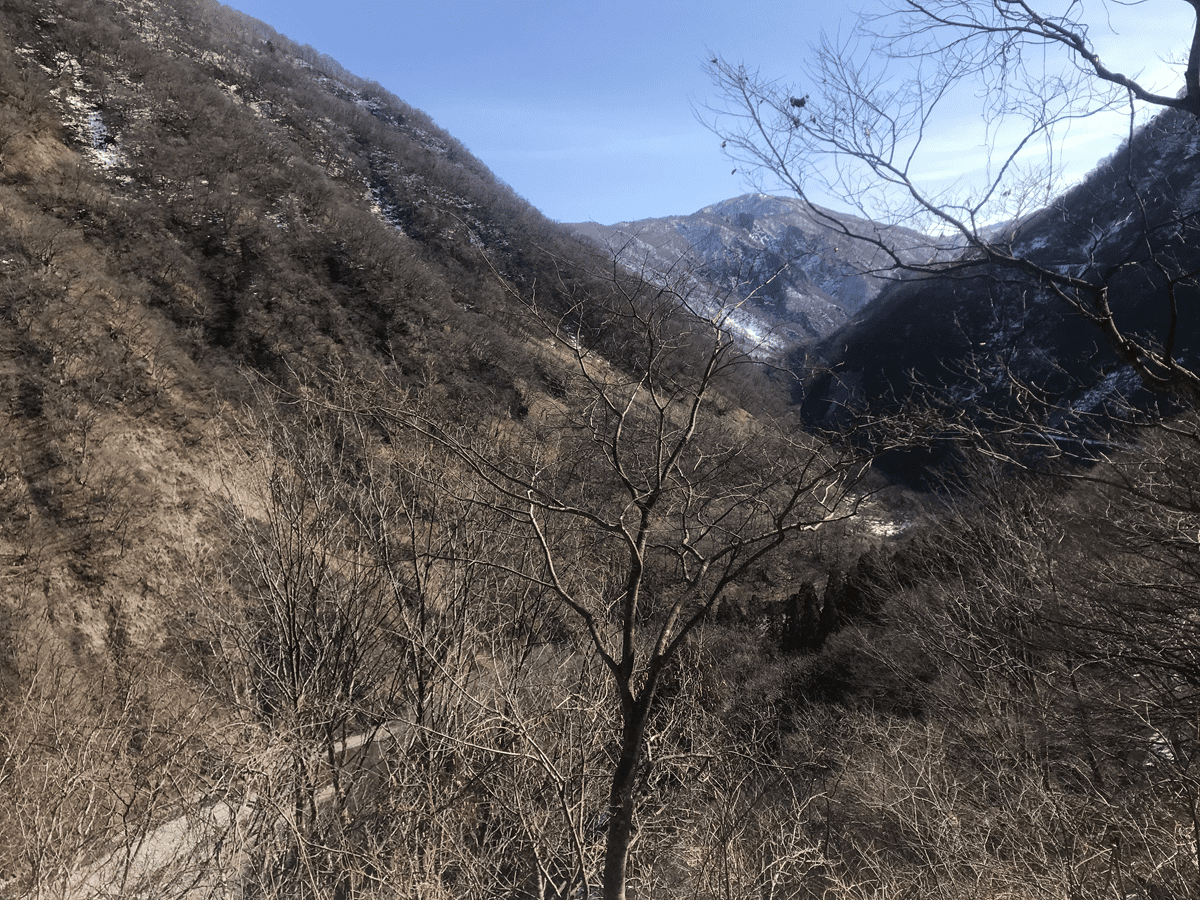 Nice view without snow
Nice view without snow
Sho-kin showed us the path that you can use to climb Mount Hakusan (which he had done many times) and explained us about the difficult and exhausting walks the monks used to endure hundreds of years ago when Hakusan was first worshipped as a holy God. I still have no idea how those monks without proper gear or food could hike at this mountainside! I truly admire their endurance and spirit.
In the afternoon, our tour was finished and we went back to the busy city life, leaving the quiet scenery of the mountains behind. I enjoyed this trip very much, however I was sad to see the landscape without snow, being all brown and dull. It’s not expected to become better this winter, so let’s hope the animals are not too confused by the warm temperatures! As I love the mountains, I want to come back to Hakusan in spring, to see the new plants grow and the flowers bloom. As it is not too far from our home, we definitely plan to go more often!
Thank you Sumie for taking us with you to this tour and thank you Sho san for your guidance and all the interesting information. I am always impressed to see how much Japanese people know about their plants and also how every plant or tree has a purpose (e.g. medical purpose, housing, wrapping of food, etc.) and how sustainable Japanese people are when it comes to using what nature provides.
If you are interested in getting on a guided tour during and learning a lot about the nature, your visit of Ishikawa, just contact me and I can get you in touch with Tabitaiken and the nature guide Sho san.
